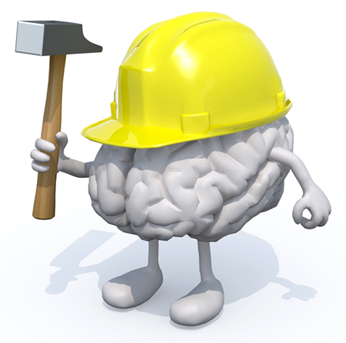The Social Construction of Mental Health

How interesting that humans are fundamentally social beings yet Safety looks for understanding of humans through individualism, cognitvism and behaviourism.
In 1973 a collection of doctors and researchers associated with the work of R. D. Laing decided to test the way the psychiatric industry constructs mental health. Led by David Rosenhan (https://en.wikipedia.org/wiki/Rosenhan_experiment ) and seven others they decided to fake symptoms of mental health and get admitted to a psychiatric hospital. The pseudo-patients all reported the same symptoms, an auditory hallucination using language of ‘empty’, ‘hollow’, and ‘thud’, to invoke the idea of an existential crisis. All the experimenters had medical expertise in either medicine or psychology.
All of the experimenters were able to get admitted to hospital and in all but one case, were given a diagnosis of schizophrenia or manic depression. Once admitted the experimenters then acted normally and do what they could to be released. They attended therapy, socialized with others, and even accepted their medications which they then disposed of. If asked, they were to say their symptoms had disappeared entirely.
What surprised the experimenters was that staff could not detect that they had been faking their condition. Even their normal behavior was ‘medicalised’ as schizophrenia or similar. It seems once inside it was easy to socially pathologies normal behavior as deviant. Interestingly, the other patients in the hospitals caught on very quickly that the experimenters were different. They were often asked if they were journalists or academics doing studies.
Unfortunately, the experimenters reported that staff dehumanized them and were brutal. The structure of the institution and the power in discourse reinforced social biases between officers and medical staff. Despite all efforts to demonstrate they were normal the shortest stay was 7 days and the longest 52 days. The average stay was 21 days.
Once the experiment was over and the hospital outrage died down Rosenhan claimed he had sent in an actor for them to identify. After presenting him with their lengthy list of suspected actors they had admitted, Dr. Rosenhan revealed that he hadn’t sent anybody at all!
The Rosenhan Experiment is similar to the Stanford Prison Experiment conducted by Phillip Zimbardo in 1971 (https://en.wikipedia.org/wiki/Stanford_prison_experiment). Of course, the medical profession were defensive and outraged and challenged the methodology of the experiments. More recently the real situation of Abu Ghraib (https://en.wikipedia.org/wiki/Abu_Ghraib_prison) endorses the findings of these studies. Much of this was laid out clearly by Michael Foucault in The Birth of the Clinic (https://monoskop.org/images/9/92/Foucault_Michel_The_Birth_of_the_Clinic_1976.pdf). Others like Alan Radley (The Body and Social Psychology; Making Sense of Illness) demonstrate so clearly how views of illness, harm, suicide, suffering and mental health are socially constructed.
Now the purpose of this discussion is not to do a deep dive into these events but rather to demonstrate how much one’s view of others is socially constructed. In a recent discussion on ethics on the SIA site we see such astounding language claiming that humans can be ‘unbiased and objective’ (https://www.sia.org.au/news-and-publications/news/where-do-companies-fall-down-ethics-whs-and-risk-auditing) (para 13). This is the kind of delusion one believes when one looks at the world through the lens of safety. The reality is, the beginning of ethics, incident investigations, audits and understanding human decision making is to get over this delusion.
As long as Safety follows the behaviourist/scientist assumption of mythical objectivity it will remain blind to how it socially constructs its own meaning and then suppresses its own delusions to itself. When we run our SEEK Investigations program (https://cllr.com.au/product/seek-the-social-psyvhology-of-event-investigations-unit-2/ ), the myth of scientific objectivity is one of the first of many myths we tackle in order to make investigations more meaningful. Unfortunately, the SEEK Program for next week is booked out.
One only has to observe the nature of institutionalised abuse and the social construction of brutalism of young people in care (https://www.childabuseroyalcommission.gov.au/) or in the aged care sector (https://agedcare.royalcommission.gov.au/Pages/default.aspx) to see just how much institutions socially construct cultures and worldviews that dehumanize others.
Until Safety is able to step away from its closed individualist/behaviourist worldview and embrace a social psychology of risk it will continue to see mental health as an individual and medical problem.



Rob long says
Hi Kevin, a bit too hectic with work commitments etc.
Bernard Corden says
The fundamentalists have taken the fun out of mental – Ken Kesey
Rob Long says
Of course, most confuse the brain with the word mental but if the mind is understood as personhood and embodied, then mental health must also be understood holistically.
Kevin Jones says
Rob, any plans to make a submission to either the Productivity Commissions’ Inquiry into Mental Health or the Victorian Royal Commission into Mental Health. Your perspective would be an important one for them to consider.
Rob long says
Hi Kevin, a bit too hectic with work commitments etc.
Kevin Jones says
Rob, any plans to make a submission to either the Productivity Commissions’ Inquiry into Mental Health or the Victorian Royal Commission into Mental Health. Your perspective would be an important one for them to consider.
Rob Long says
Of course, most confuse the brain with the word mental but if the mind is understood as personhood and embodied, then mental health must also be understood holistically.
Bernard Corden says
The fundamentalists have taken the fun out of mental – Ken Kesey